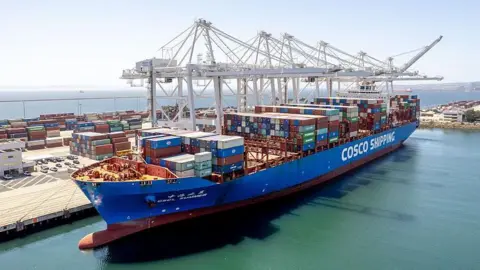The USTR has accepted the suggestion to modulate the tariffs, but the general framework remains very severe
As expected, yesterday the U.S. Trade Representative ( USTR ) the White House office that had been given the mandate (under Joe Biden, renewed by Donald Trump) to study measures to counter China’s dominance in the maritime industry, concluded its work and proposed a complex set of tariff measures that the Trump administration will now have to decide – another public discussion session is scheduled for next month – whether to formalize
The first package
The first package of measures will hit ships of Chinese operators or owners that call at US ports. From mid-October, for every call up to five in a year these ships will pay a duty of 50 dollars per net ton (which is calculated by subtracting the areas dedicated to on-board services, such as engine rooms, service areas and other spaces not intended for cargo, from the gross tonnage). Every six months the duty will increase until reaching 140 dollars per net ton in April 2028.
Related : Trump administration adjusts China ship fee plan
The second group
The second group includes operators (excluding U.S. operators provided they are at least 75% U.S.-owned) of Chinese-built vessels. Starting in October, for each call of these vessels up to five calls per year in a U.S. port, they will have to pay the higher of the following: $18 per net ton or $120 per container unloaded. Both figures will increase every six months to reach $33 per net ton or $250 per container unloaded in April 2028, respectively.
Some exceptions

Related :Trump : A new anti-Beijing tariffs on ships arriving in US ports
This fees can be suspended for a period of up to three years if during that period the shipowner orders and takes delivery of a U.S.-built vessel of equivalent or greater net tonnage. There are also some exceptions, including for chemical tankers, ships arriving empty or in ballast, ships with a capacity of less than 4,000 TEU or 55,000 DWT or 80,000 DWT of individual bulk capacity (which is not defined in the provision), ships arriving in inland US ports from voyages of no more than 2,000 nautical miles.
The third annex
The third annex concerns operators of car carriers and ro-ro ships built abroad. From mid-October, these ships will be subject to a fees of $150 per Car Equivalent Unit (Ceu) per port call, which will not increase and can be suspended for up to three years if the shipowner orders and takes delivery of a vessel built in the United States with equal or greater capacity.
The fourth package
The fourth package includes some restrictions on LNG exports, which will have to be operated starting from April 2028, for 1% (compared to what was exported the previous year) with US-flagged ships and operated by US entities. From 2029 the field will be restricted to gas tankers built in the US and the percentage will grow to reach 15% in 2047.
Statement of The USTR
The USTR has finally proposed to evaluate the imposition of tariffs (in addition to those possibly deriving from other offices of the administration) on Chinese products related to maritime transport such as ship-to-shore cranes, containers and trailers.




